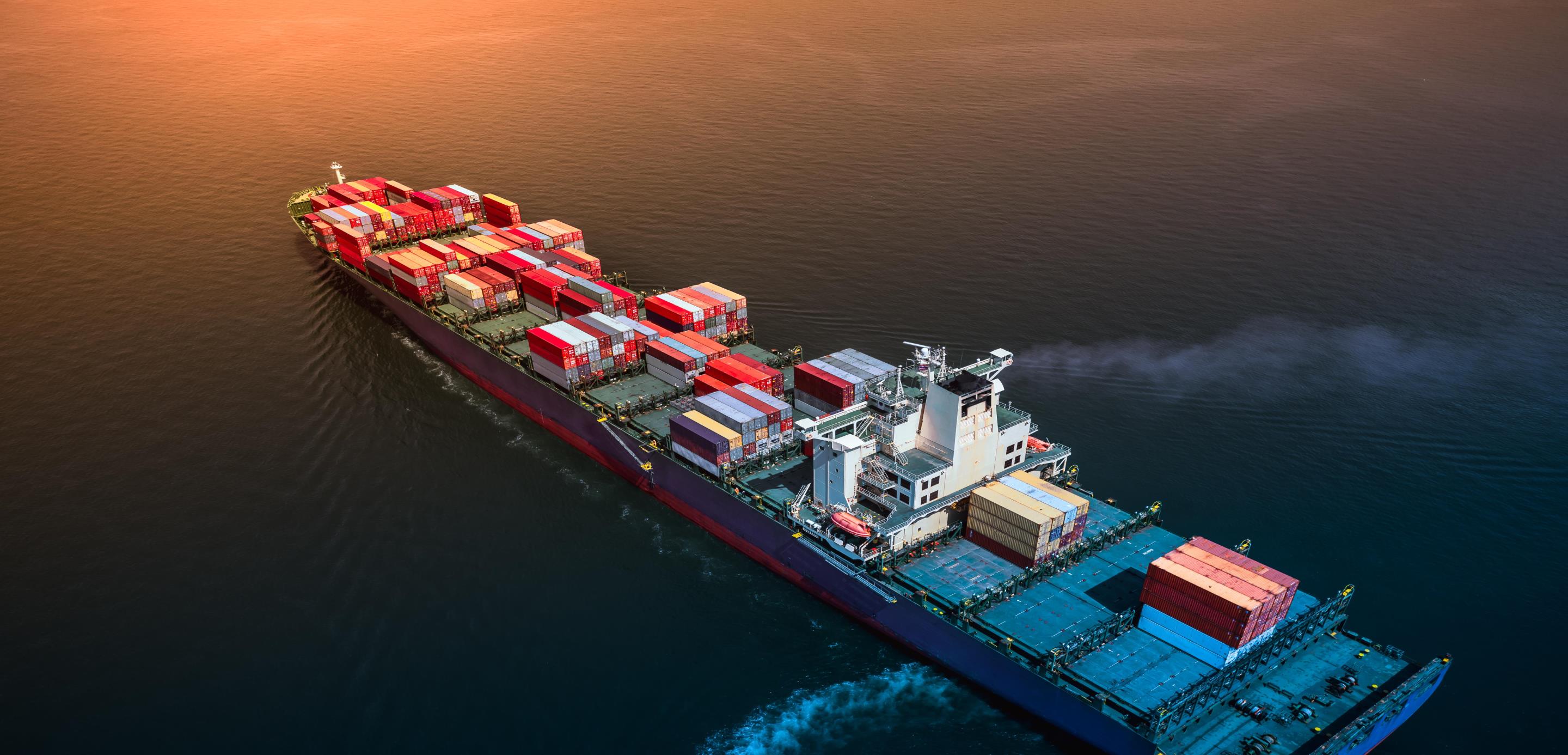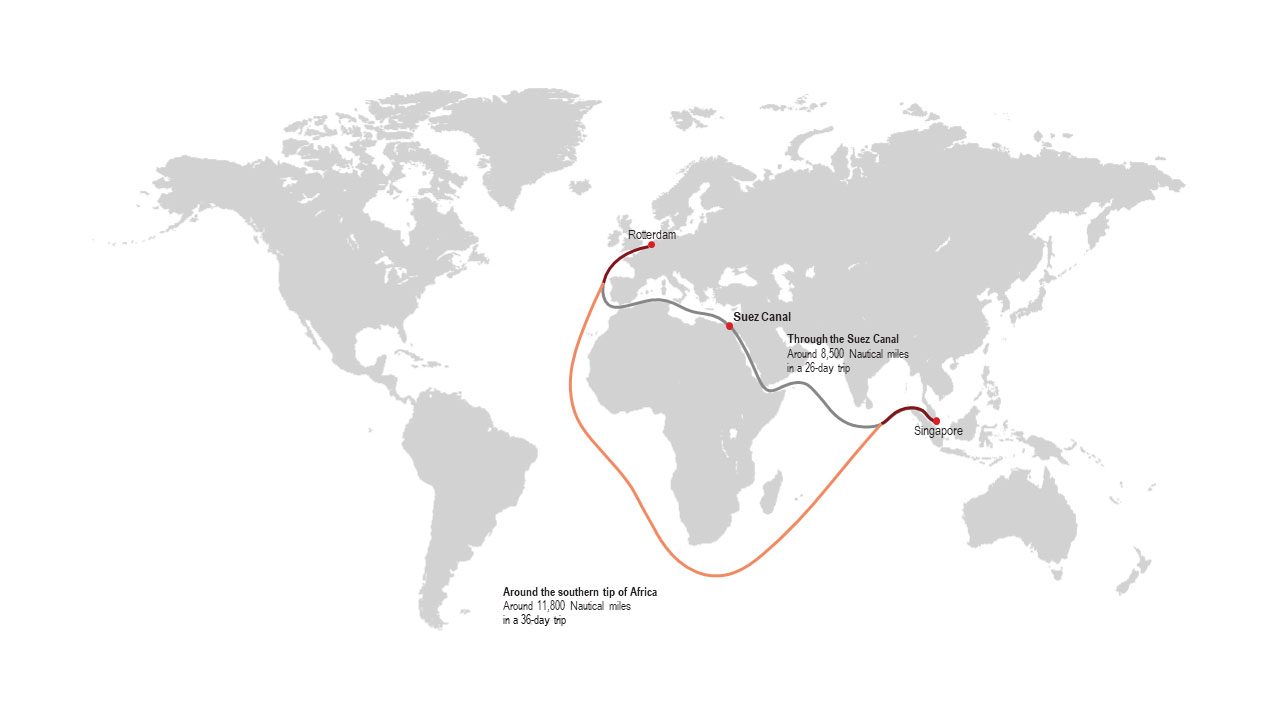- Article

- Global Research
- General Research Insights
- Emerging markets
ASEAN Perspectives
- Three months after the Red Sea disruptions started, a further prolongation poses risks to Asia-Europe trade
- Fortunately, there is a limited impact on ASEAN’s trade so far, although certain products are more vulnerable than others
- That said, caution is warranted given the potential for rising global oil prices, as inflation in ASEAN is sensitive to this
Red Sea, red flags?
At first glance, the Red Sea disruptions look like a risk for ASEAN economies, which are still awaiting a pick-up in global trade. For instance, a cargo ship from Singapore to Rotterdam typically takes 26 days, but is now facing a 10-day delay to re-route. That said, this may not be an immediate red flag for ASEAN trade, as it has relatively limited exposure to Europe and the Middle East. The region’s large exporting destinations are intra-ASEAN, mainland China, and the US. Alas, certain products may be more vulnerable than others, including textiles and footwear from Vietnam and Thailand’s auto exports. Still, broadly, ASEAN’s limited exposure to the affected regions provide some shield to its trade sector from geopolitical-induced disruptions.
Oil, oil, oil
Despite limited trade exposure to the Middle East, one key commodity that nobody can underestimate is oil. Except Indonesia, the rest of ASEAN imports at least 50% of its crude oil from the Middle East. But a closer look at exporter profiles can provide some relief: around 70% of ASEAN’s oil imports from the Middle East come from the Strait of Hormuz, whose trade flows are not disrupted. Even for the remaining 30% that comes from Saudi Arabia, many crude carriers have been diverted away from the Red Sea. So far, there has been no discernible impact on international oil prices.
Keep an eye on inflation
However, all this warrants a close watch if the current situation is prolonged. After all, ASEAN is particularly sensitive to volatility in global oil prices. Recall that most of the region saw a sharp rally in energy inflation back in 2022, pushing central bankers to tighten their monetary belts by large magnitudes. While there is little reason to worry about a déjà vu of energy-induced shocks now, it is prudent to keep a close eye on how the situation might unfold, particularly when central bankers are about to embark on easing monetary cycles on the back of moderating inflation.
Chart 1. Asia-Europe voyage – Suez Canal transit vs around the Cape of Good Hope
Would you like know more? Click here* to read the full report. You must be a subscriber to Global Research to access this link.
To find out more about HSBC Global Research, and how to subscribe, please email askresearch@hsbc.com.
*Please note that by clicking on this link you are leaving the HSBC Global Banking & Markets Website, therefore please be aware that the external site policies will differ from our website terms and conditions and privacy policy. The next site will open in a new browser window or tab.
Global Research
HSBC Global Research provides information, insights and thought-provoking ideas.




